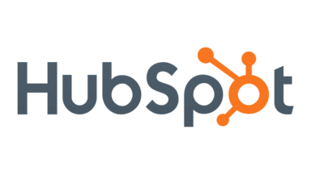
Cleverreach - HubSpot Integration
Consolidate marketing operations by migrating all email automation, segmentation, and data integrations from CleverReach to HubSpot
Skills used
CRM and marketing automation expertise (HubSpot, CleverReach)
Data mapping and integration logic
Workflow and email automation design
GDPR compliance knowledge
Project management and stakeholder coordination
My Role & Business Impact
As the project lead, I coordinated cross-functional teams, managed timelines, and ensured data integrity throughout the migration. The outcome was a fully centralized marketing system with:
Cancellation of the Cleverreach license, saving appr. 1.2k Euro yearly
Streamlined data governance
Improved GDPR compliance
Enhanced scalability for future marketing initiatives
As part of a strategic initiative to centralize marketing operations, we successfully migrated one of our business units from CleverReach to HubSpot, aligning all marketing activities under a single CRM platform. CleverReach had been used extensively for automated and manual email campaigns, autoresponder workflows, integration with the product backend to sync trial and customer data and audience segmentation and subscription management
About Cleverreach




Actions Taken
Objective
Consolidate marketing operations by migrating all email automation, segmentation, and data integrations from CleverReach to HubSpot.
Recreating All Marketing Assets (Emails, Workflows) in HubSpot
I conducted a full audit of existing CleverReach assets, including newsletters, promotional campaigns, and autoresponder sequences. Each email was rebuilt in HubSpot using its drag-and-drop editor, ensuring brand consistency and responsive design. Workflows were restructured using HubSpot’s automation engine, replicating logic for lead nurturing, onboarding, and re-engagement while optimizing for performance and scalability.
Rerouting Online Forms to HubSpot for Unified Lead Capture
All web forms previously connected to CleverReach were identified and replaced with HubSpot forms. Forms that were built by product backend remained as they also needed specific information and trigger (like license keys etc.) to stay connected. I also configured form actions to trigger appropriate workflows, assign lifecycle stages, and apply GDPR-compliant consent tracking.
Replacing the CleverReach Backend Sync with a Custom Object in HubSpot
The product backend integration, which previously pushed trial and customer data to CleverReach, was reengineered to sync with HubSpot in collaboration with the product backend dev team. I created a custom object in HubSpot to represent product usage data, mapping key fields such as trial start date, product type, and user status. This allowed for more granular segmentation and personalized communication based on real-time product engagement.
Rebuilding Segmentation Logic and Subscription Preferences
I analyzed existing CleverReach segments to rebuild them in HubSpot using lists and custom properties. This included behavioral segments (e.g., trial users, active customers), demographic filters, and subscription types. Subscription preferences were aligned with HubSpot’s subscription center, allowing users to manage their communication preferences transparently and in compliance with GDPR.
Migrating Contact Data with Integrity Checks
Contact data was exported from CleverReach and imported into HubSpot using a structured migration plan. We performed data cleansing to remove duplicates, normalize fields, and ensure accurate mapping. Custom properties were created in HubSpot to preserve historical data, and integrity checks were run post-import to validate completeness and consistency.
Ensuring GDPR Compliance
I reviewed all subscription data to ensure it met GDPR standards. This included verifying consent records, updating legal basis for processing, and configuring double opt-in where required. HubSpot’s GDPR tools were leveraged to manage consent, provide access logs, and enable data deletion upon request. Subscription types were audited and adjusted to reflect user preferences accurately.
Final Summary
This successful migration not only reduced operational complexity but also laid the foundation for more efficient, data-driven marketing across the organization. It demonstrates the value of aligning tools and processes under a unified CRM strategy.

Contact
Connect
daniel.szaloczi@gmail.com
+36705801887
© 2024. All rights reserved.
